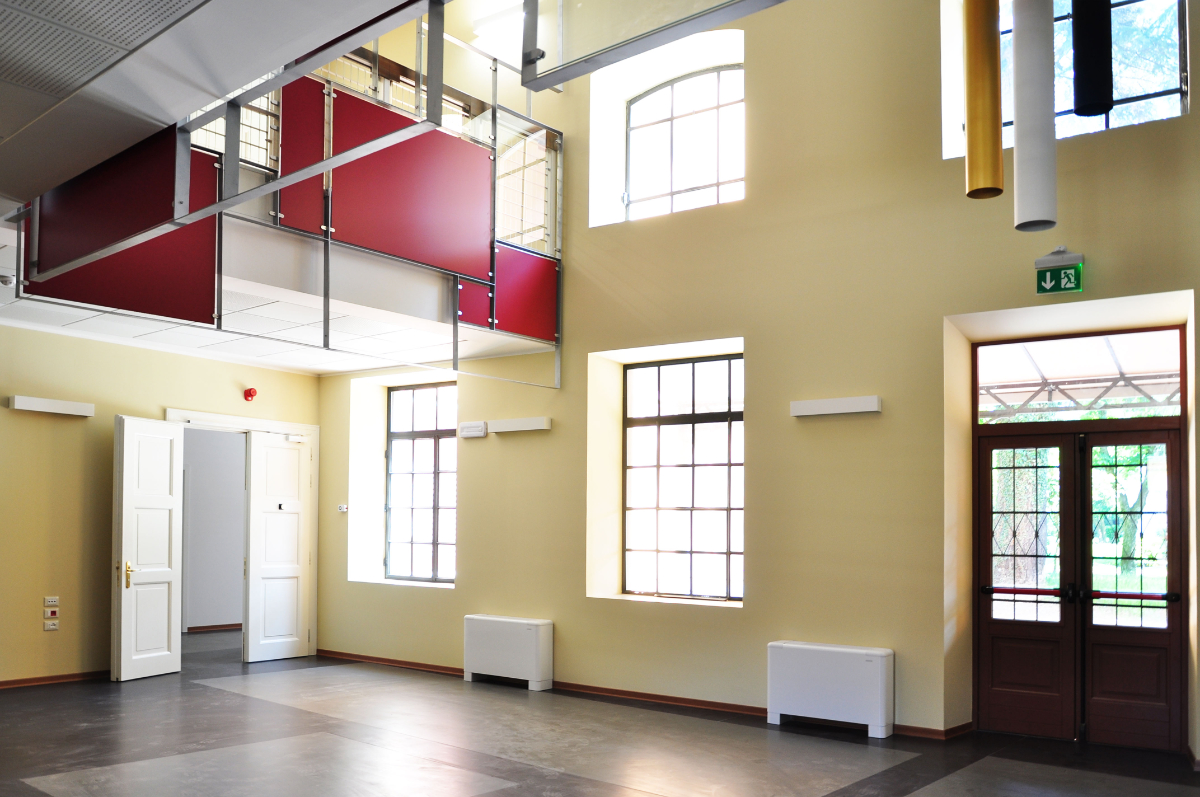
CSM GORIZIA
The rehabilitation of the building subject to a monumental constraint was intended to house the 24- hour Integrated Mental Health Center of Gorizia and was part of a larger project of functional reactivation of the Basaglia Park hospital complex, a unique historical testimony of a certain way of understanding psychiatry at the forefront in Europe and Italy. The building has undergone general restoration and renovation, aimed at preserving and enhancing its characteristics, as it is a building of particular value both for its constructive and architectural quality and for the urban layout of the entire psychiatric complex to which it belongs. Originally used as the kitchen of the asylum of Gorizia (frenocomio in 1911, then psychiatric hospital in 1930), the building is located on the central axis of the district in a hinged zone between a first part for hospital and therapeutic use and a second part dedicated to services.
The success of the project was fundamentally based on the distributive character of the specific functions inherent in the use of the Mental Health Center. In fact, it was decided to divide the main functions (day center - territorial activity - inpatient care) on the different levels: the ground floor where the common areas for reception, group therapy rooms, the refectory and the pharmacy are located, as well as the outdoor elements connecting with the park, such as the loggia and the plateatico. The latter allowed the courtyard that opens toward the park to be used as a relaxation space; the first floor, which is devoted to inpatient care and medical and nursing functions and it’s the true functional node of the center: it remains in visual contact with the floor below through the double- height lobby and the internal balcony; here is where the mezzanine and elevator fulfill the needs of connecting the different parts of the building and accessing to the various floors; the second floor, which houses the organization, planning and therapy activities; through the new terrace on the loggia has been ensured an outlet to the outside to the various premises present; the basement, reachable either by the internal lift or by external access; on the south side there is a multipurpose room equipped with an external exit - suitable for small conferences or film screenings - as well as a music room, while the north side houses technical rooms, storage rooms and the boiler room.
Where the existing functional aspect was deficient in relation to the new uses, the project provided for the inclusion of new elements, which are rotated and asymmetric compared to the existing system:
External loggia - Placed in adherence to the south facade, it formally and functionally dialogues with the architectural structure of the building without altering its compositional substance. It fulfills the shading function of the facade and provides an outlet to the second-floor rooms through its large terrace, emblematically connoting the main entrance of the building through the evocation of the image of a sailing ship. Made of hot-dip galvanized steel and assembled by means of bolting systems, it consists of four central pillars of circular cross-section to support the secondary horizontal structures, also made of steel, with larch wood slat finishes for the walking surfaces.
Interior balcony and panoramic elevator - Placed on the first floor and located in the center of the lobby, they are both supported by two vertical concrete septa. The elevator, placed at the intersection of two sides of the balcony, is square in shape and is buffered with transparent glass slabs; the balcony, with an irregular trapezoidal shape, runs along three sides of the building central space, is equipped with a glass parapet and protected inward with a play of grids and colored panels.
The building has undergone considerable structural, plant engineering and restoration work on the pre-existing elements. All the interventions were as respectful as possible of the original structure and designed with the principle of reversibility. Among the interventions not recognizable at first glance are the sub-foundations and the formation of the sanitary vacuum, the stiffening of the floors, the formation of floor bands through the application of carbon fiber nets and the stitching of the main masonry, all aimed at improving the structural behavior in the event of an earthquake. Integrated in the architectural design are also the elements of fire prevention: compartments, fire doors, filter compartments, ventilation, smoke detectors and escape routes.
The distribution network of the plants has been integrated within the original structure without altering it, using for example the existing chimneys as the terminals of the roofing systems. A careful restoration was applied on the main original architectural elements, such as the facade, roofing, linda, exterior window frames, skirting and sills; internally, the stairwells with wrought- iron railings and wooden handrails, and the interior window frames were recovered.
It was also chosen to preserve some historical evidence, for example, furniture elements dating back to the post-war period.